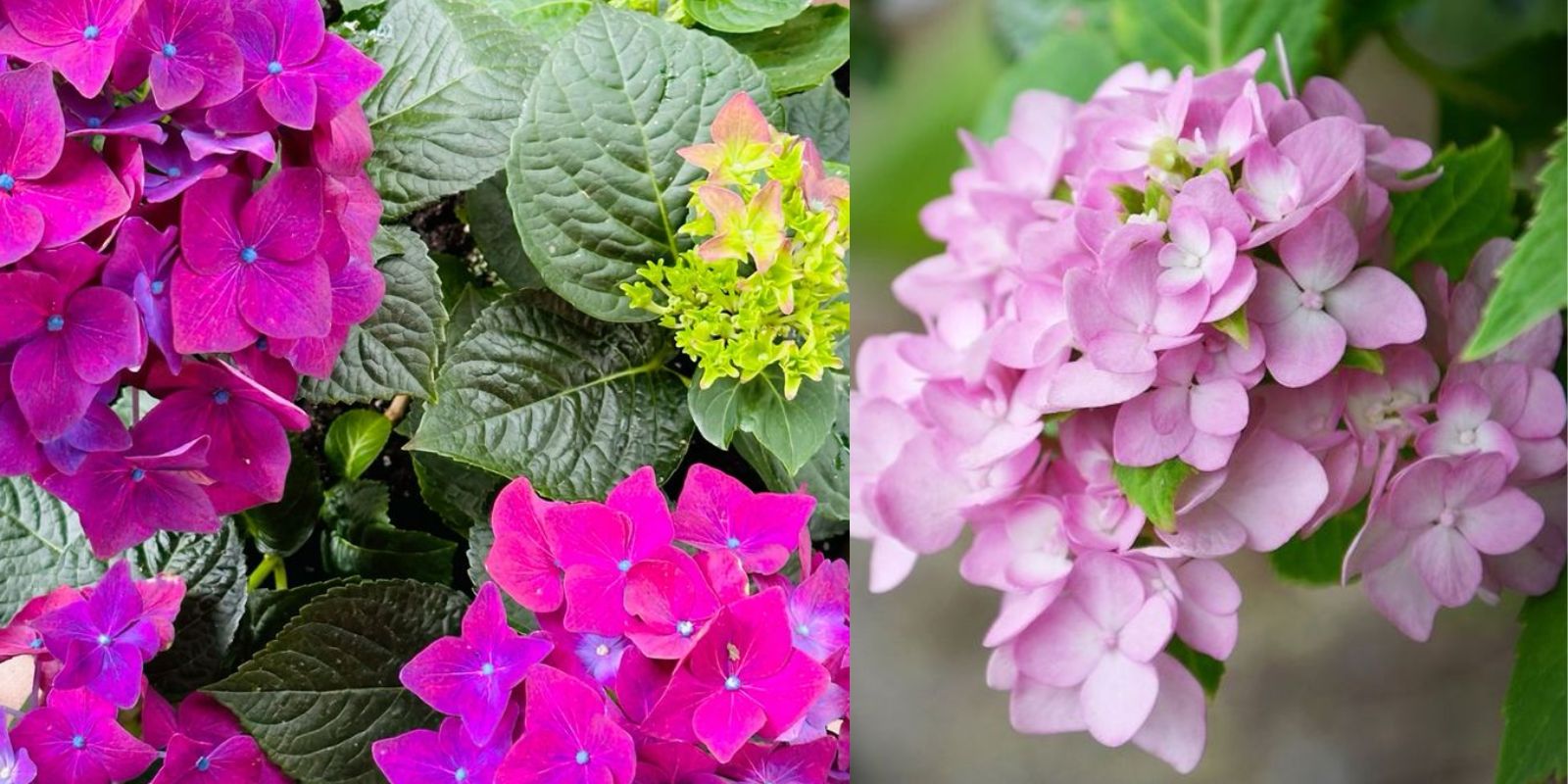Hydrangeas are one of the most beloved garden plants, cherished for their spectacular blooms and lush foliage. Among the various species, Hydrangea macrophylla, commonly known as bigleaf hydrangea, stands out for its impressive flower heads and adaptability. Whether you’re a seasoned gardener or a novice, this guide will provide you with everything you need to know about growing and caring for Hydrangea macrophylla.
Introduction
Hydrangeas have earned a special place in many gardens due to their vibrant and diverse blooms. The Hydrangea macrophylla, or bigleaf hydrangea, is particularly favored for its large, rounded flower clusters and the ability to change flower color based on soil pH. This versatility makes it an attractive choice for gardeners looking to add a splash of color and elegance to their outdoor spaces.
Choosing the Right Location
Sunlight Requirements: Hydrangea macrophylla thrives in locations that receive morning sun and afternoon shade. While it can tolerate full sun in cooler climates, it generally prefers protection from the harsh afternoon rays, which can cause leaf scorch and reduce blooming.
Soil Conditions: Hydrangeas require well-drained soil that is rich in organic matter. They are sensitive to waterlogged conditions, which can lead to root rot. Ensure the planting area has good drainage, and consider adding compost to improve soil structure and fertility.
Space Considerations: Bigleaf hydrangeas can grow quite large, so provide ample space for them to spread out. Allow at least 3 to 5 feet between plants to ensure they have room to grow and air can circulate freely around them.
Planting Hydrangea macrophylla
Timing: The best time to plant Hydrangea macrophylla is in early spring or fall. Planting during these seasons allows the plant to establish its roots before the extremes of summer heat or winter cold.
Preparation: Start by digging a hole that is twice as wide as the root ball and just as deep. If you have heavy clay soil, consider mixing in some sand or compost to improve drainage.
Planting: Place the hydrangea in the hole so that the top of the root ball is level with the surrounding soil. Backfill the hole with soil, gently tamping it down to remove air pockets. Water the plant thoroughly after planting to help settle the soil around the roots.
Mulching: Apply a layer of mulch around the base of the plant to retain moisture, regulate soil temperature, and suppress weeds. Use organic mulch such as bark or wood chips, and keep it a few inches away from the plant’s stem to prevent rot.
Watering and Fertilizing
Watering: Hydrangeas need consistent moisture to thrive. Water the plant deeply once a week, especially during dry periods. In hotter climates, you may need to water more frequently. Avoid overhead watering to prevent fungal diseases; instead, water at the base of the plant.
Fertilizing: Feed your hydrangeas with a balanced, slow-release fertilizer in early spring as new growth begins. A second application in mid-summer can support continued blooming and healthy foliage. Avoid high-nitrogen fertilizers, which can lead to excessive leaf growth at the expense of flowers.
Adjusting Soil pH: One of the unique features of Hydrangea macrophylla is its ability to change flower color based on soil pH. Acidic soils (pH below 6) will produce blue flowers, while alkaline soils (pH above 7) will yield pink flowers. You can adjust soil pH by adding soil amendments such as aluminum sulfate for blue flowers or lime for pink flowers.
Pruning Hydrangea macrophylla
Timing: The best time to prune Hydrangea macrophylla is in late winter or early spring before new growth begins. Pruning at this time helps shape the plant and promotes vigorous blooming in the coming season.
Techniques: Remove dead or weak stems first, then shape the plant as needed. For older plants, cut back the oldest stems to the base to encourage new growth. Avoid cutting back the plant too severely, as this can reduce flowering.
Deadheading: Remove spent flower heads to promote new blooms and keep the plant looking tidy. If you want to leave some flowers on the plant for winter interest, that’s also acceptable.
Pest and Disease Management
Pests: Common pests that affect Hydrangea macrophylla include aphids, spider mites, and scale insects. Regularly inspect your plants for signs of infestation, such as distorted leaves or sticky residue. Use insecticidal soap or neem oil to control pests if needed.
Diseases: Hydrangeas can be susceptible to diseases such as powdery mildew, leaf spot, and rust. Ensure good air circulation around the plants to reduce humidity, which can promote fungal growth. If diseases do occur, remove affected leaves and use appropriate fungicides if necessary.
General Care: Regularly check for signs of stress, such as wilting or yellowing leaves. Address issues promptly to keep your hydrangeas healthy and vibrant.
Winter Care
In colder climates, protect Hydrangea macrophylla during the winter months to prevent damage from frost and freezing temperatures:
- Mulching: Apply a thick layer of mulch around the base of the plant to insulate the roots and prevent frost damage.
- Covering: In very cold areas, you may want to cover the plant with burlap or other protective materials to shield it from harsh winds and freezing temperatures.
- Pruning: Avoid heavy pruning in late fall, as this can stimulate new growth that is vulnerable to winter damage.
Conclusion
Hydrangea macrophylla is a stunning addition to any garden, offering vibrant blooms and lush foliage that enhance the beauty of your outdoor space. By choosing the right location, preparing the soil, and following proper care techniques, you can ensure that your bigleaf hydrangeas thrive and produce impressive flowers year after year. Embrace the elegance of Hydrangea macrophylla and enjoy its breathtaking blooms as a centerpiece in your garden. 🌸

